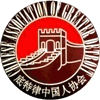Chinese immigrant communities around the world have made significant contributions to their new countries. They have been involved in agriculture, manufacturing, domestic service and retail trades.
Family and district benevolent associations helped rural Chinese immigrants meet their economic needs while preserving a cultural identity. They also worked to combat discriminatory legislation.
Origins
Chinatowns arose as self-sufficient communities based on traditional culture in the face of adversity. During the Gold Rush of 1848, California’s Chinese immigrants eked out livings as domestic workers and entrepreneurs in laundromats and restaurants. They were blamed by labor leaders and politicians for bringing down wages, depressing economic conditions and driving out white Americans from the state.
After World War II, laws such as the Chinese Exclusion Act were repealed. The McCarran-Walter Act of 1952 and the Immigration Act of 1965 opened the door for increased Asian immigration.
Today, the United States is home to the largest community of Chinese outside of China. Known as Chinese Americans, these people come from all over the globe. In addition to cities like New York, San Francisco and Boston, small pockets of Chinese live in rural towns such as Providence, Rhode Island.
Languages
The Chinese are a close-knit, inwardly-looking people, whose austerity, toughness and business acumen make them valuable members of the communities they live among. They have maintained their own traditions, including celebrating the Chinese (lunar) new year and emphasising family solidarity.
Like many other languages, Chinese has absorbed a sizable number of loanwords. These are mostly formed out of native Chinese morphemes, but direct phonetic borrowing has also taken place.
The vast majority of Chinese speakers speak Mandarin, or Putonghua, which is the official language of China. Other major dialect groups are Cantonese and Xiang. All these are part of the Sino-Tibetan language family. They differ from one another both linguistically and culturally, although they form an overarching Chinese nation. This makes it difficult to define a single Chinese language.
Family structure
Chinese family structure is a complex web of relationships and values that has evolved alongside China’s rapid modernization. It is traditional for extended families to live together and the value of filial piety (
Confucius taught that respect and obedience for elders are essential virtues, which still hold true today. Parents and grandparents are revered and play an important role in raising grandchildren and taking care of elderly family members.
Children are expected to sacrifice their own interests for the sake of their parents, who often live off their savings or investments made by their children. Parents place a heavy emphasis on their children’s education and success, as it reflects well on the family’s honor. Children are expected to help their parents financially until they graduate from college, find employment, and become independent of their parents.
Education
As they migrated to California in the 1850s, Chinese workers built a culture of autonomy centered around Chinatown. They created dance groups, theaters, and even a children’s chorus. They also fought against discriminatory laws and advocated for family unification. Today, many Chinese communities are struggling to stay connected with their roots and maintain cultural integrity.
Through a close look at two artworks, students will search for a hidden history. Then, they’ll create their own artwork that tells the story of one of their community members. This activity helps students develop skills such as object analysis and reading closely. They will learn about the importance of connecting to and analyzing their own community.
Religion
The study of religion in China presents special challenges. The Chinese government discourages research into sensitive topics, including religious beliefs and practices, and often retaliates against scholars who conduct it. Nevertheless, many scholars outside of China continue to study Chinese religion, even though some express trepidation about the scope of their work.
Surveys present a variety of questions that seek to categorize people’s religious affiliations. Some of these are Confucian (ancestor worship), Taoist (belief in deities) or folk religious, but others blend elements from a range of traditions and thus do not easily fit into one of the traditional categories. This makes the question of how many people identify as religious in China particularly difficult.
